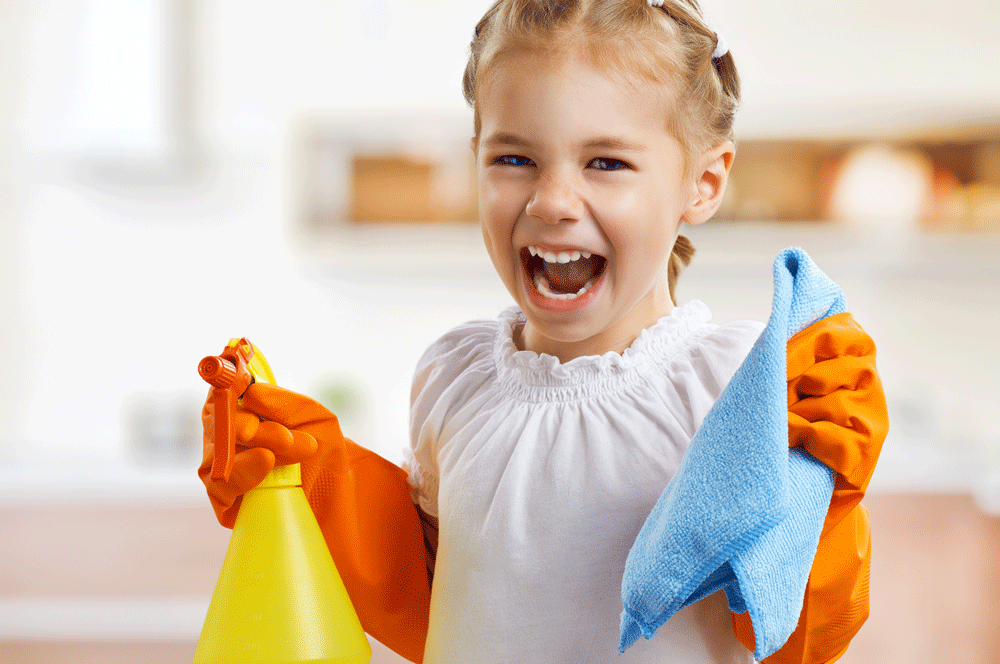5 Spring Cleaning Safety Tips
The weather is finally getting warm enough to turn off the heat, open the windows and tackle those spring cleaning and yard projects you’ve been putting off. It can be an exciting time for your family! Before you get started, take a look at these important tips for safe and healthy spring cleaning.
- Think ahead about the safest way to involve (or not involve) your kids in your project. If you’ll be taking out sharp tools or using chemicals, use a gate to separate the area you are working in or set up a play yard for your little ones. For older kids, give them age-appropriate tasks that are part of the project and tell them specifically what activities they can and can’t help with.
- Choosing safe products to use for cleaning and yardwork is trickier than it seems; even products labeled “natural” or “green” are not always best. Fortunately, there are some great resources to help you sort through the options. The EPA has a certification called “Safer Choice” that identifies products that are least hazardous to human health and the environment and the Environmental Working Group provides information of potential health risks of various ingredients and chemicals in your household products.
- Keep cleaning and yard products in their original containers so you always have their ingredients and instructions. Never mix cleaning products other than to dilute with water. Some products can become toxic when mixed; for example, bleach reacts with other chemicals to make toxic gases.
- Find the right strength and type of cleaner for the job. A disinfectant is a product that can kill almost all germs on a surface, whereas general cleaners will remove debris and many germs but not all. Disinfectants like bleach, peroxide, Lysol, Clorox and similar products are important for cleaning up bad germs like when someone in your household was sick or had an accident, but it is actually better not to use disinfectants for routine and light cleaning and dusting because they also kill good bacteria that are important for children’s developing immune systems.
- Store all cleaning products (and all medications) inside of a “child-proof” locked cabinet or box. Even if it is out of reach and even if your child knows not to touch them, tragedies like burns and poisonings do happen when parents think their kids won’t get into household chemicals. Better to be safe than sorry!
If you suspect your child ingested or had a concentrated cleaning product spill on him/her, call the poison control center immediately at 1-800-222-1222, even if your child doesn’t seem to have any symptoms. The Minnesota Poison Control line is free to use and run by experts in toxins and poisonings. Of course, if in need of immediate medical attention, call 911.
Keep these tips in mind as you start your projects to keep your spring cleaning safe, fun and productive!
